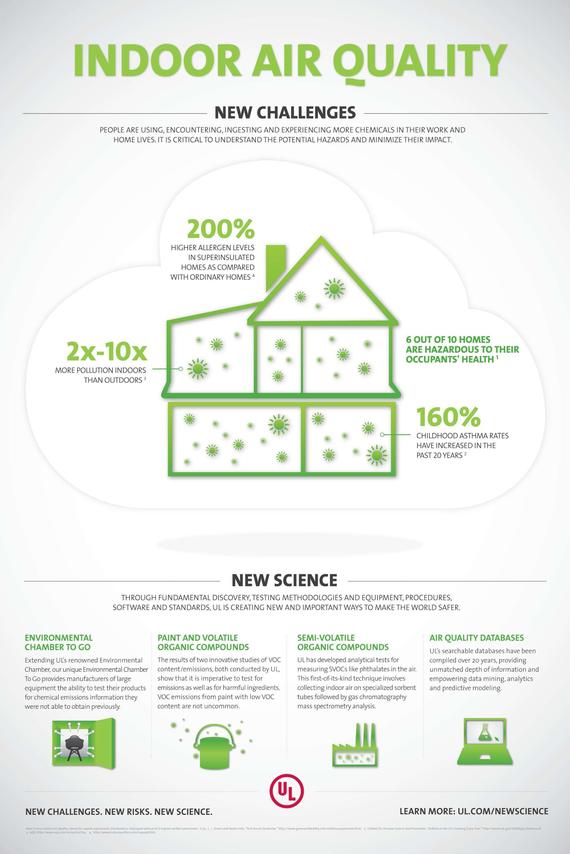As tree pollen in the spring morphs into grass pollen in the summer, allergy sufferers are probably blaming the air out there. But it's the air in here -- in the office -- however, that's probably making them wheeze, cough and sniffle.
According to the EPA, the air inside can be two to five times more polluted than outside. Even though the EPA has ranked indoor air pollutants among the top five environmental risks to public health, it may not be a topic that comes up around your water cooler.
The impact of indoor air pollutants can be subtle -- eye irritation, headaches, nausea and fatigue. However, a growing body of research suggests that poor indoor air can increase the risk of asthma, pulmonary infections and allergies. Poor indoor air hinders comfort, attention span and productivity, and OSHA estimates that poor indoor air costs employers $15 billion annually due to worker inefficiency and sick leave.
Few companies are focused on poor indoor air and its impact on workforce productivity. Concerned about maximizing productivity, many employers today focus on encouraging employees to eat well and exercise, but they haven't done much to improve the air their employees breathe. According to research conducted by the Lawrence Berkeley National Laboratory, employers can improve workforce performance by up to 10 percent through improvements in the quality of indoor air.
One of the major reasons for poor indoor air is the growing amounts of chemicals in the workplace, which can emanate from technology hardware, construction materials, furniture and furnishings, and cleaning products.
Printers and copiers can emit volatile organic compounds (VOCs), small particles and ozone while other products like floor and wall coverings, paints and furniture can emit hundreds of different VOCs into the air including formaldehyde and toluene. Computers and other electronics generate significant amounts of heat, accelerating emissions into the air from the plastics, circuitry and adhesives used to make these products. And this doesn't even take into account the impact of cleaning products, pest control solutions, personal care products and more that can also send odors and VOCs into the air.
Not only are we coming into contact with more chemicals than ever before, we are spending more time around them -- the average American spends up to 90 percent of his time indoors.
Outdoor air ventilation is essential to reducing indoor air pollutants and providing good air quality in the workplace. While increased ventilation may reduce VOCs, it increases the use of energy. As a result, many modern buildings are designed with a tight seal, which is good for energy efficiency, but bad for air quality. The World Health Organization estimates that 30 percent of all new or renovated buildings have poor indoor air quality.
Since smoking was banned in the American office, indoor materials, furnishings and office equipment have become the biggest threats to the air we breathe. Luckily, small changes can make a big difference. Install large networked printers in well-ventilated spaces with direct exhaust to the outdoor air, and if you must use a personal printer in a confined workspace, select a printer with slower printer speed and an environmental certification, as they will emit fewer chemicals.
Also, don't constantly fiddle with the thermostat as fluctuations in temperature and humidity can cause condensation and lead to mold growth and -- in extreme cases -- could affect the indoor air quality by increasing chemical emissions and odors from products. And lastly, seek out and purchase office products with the lowest possible chemical emissions.
A healthy workplace can lead to a more productive workforce. With some small changes, you can stop choking off employee productivity by cleaning up the air they breathe.
